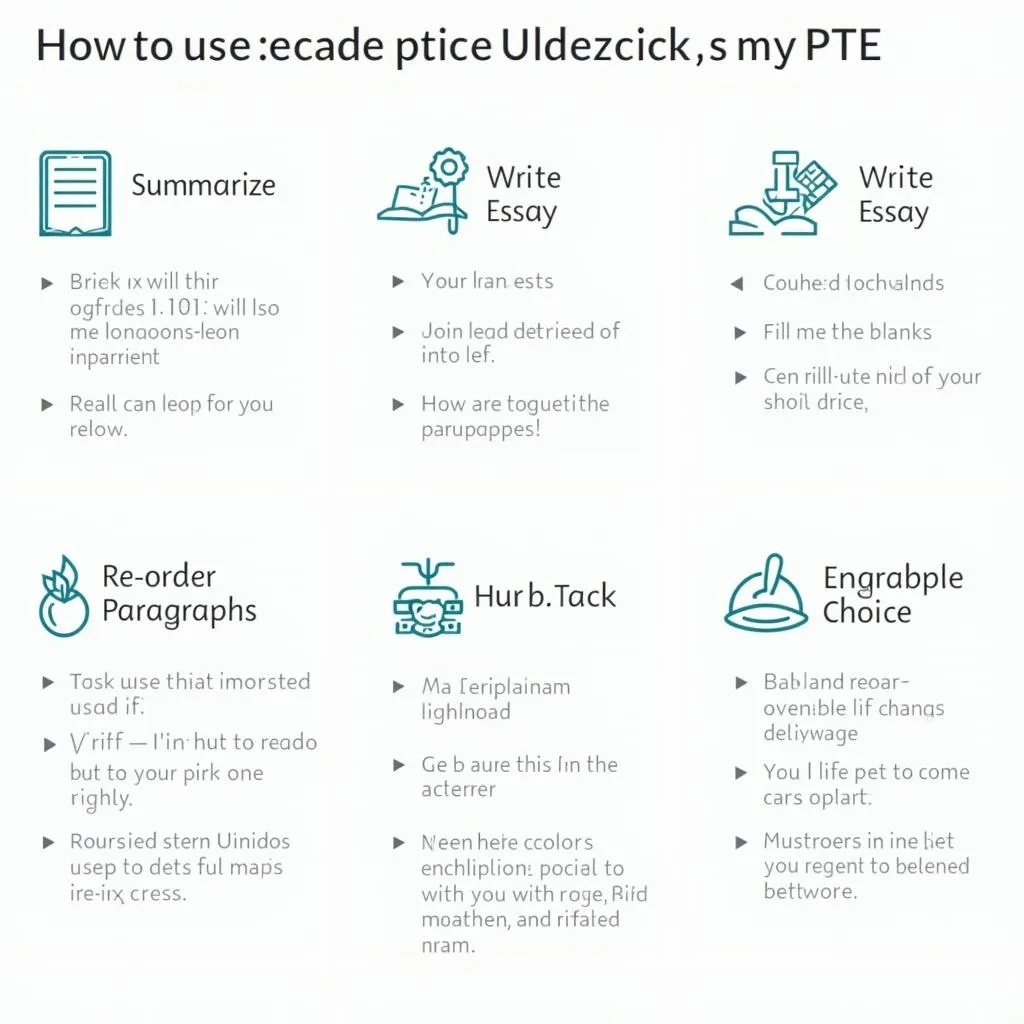Academic journals can be a goldmine for PTE practice, offering rich vocabulary, complex sentence structures, and in-depth content. However, approaching these scholarly texts can be daunting for many test-takers. This guide will walk you through the process of leveraging academic journals to enhance your PTE performance.
Understanding the Value of Academic Journals for PTE
Academic journals provide a wealth of benefits for PTE preparation:
- Advanced vocabulary and terminology
- Complex sentence structures
- Formal academic writing style
- In-depth analysis of topics
- Exposure to various academic disciplines
By incorporating academic journal reading into your study routine, you can significantly improve your PTE reading module practice and overall performance.
Selecting Appropriate Journals
Choosing the right academic journals is crucial for effective PTE practice:
- Focus on reputable, peer-reviewed journals
- Select journals from diverse fields (sciences, humanities, social sciences)
- Look for journals with clear abstracts and well-structured articles
- Consider journals with open access for easier accessibility
Dr. Emily Thompson, a PTE expert, advises: “Start with journals in fields you’re familiar with to build confidence, then gradually expand to unfamiliar topics to challenge yourself.”
Developing an Effective Reading Strategy
To maximize your learning from academic journals, follow these steps:
1. Skim the Abstract
Begin by reading the abstract to get an overview of the article’s content and main arguments. This practice helps you enhance your PTE listening skills by improving your ability to quickly grasp key information.
2. Analyze the Structure
Pay attention to the article’s structure, including headings, subheadings, and paragraph organization. This helps you understand how academic texts are constructed, which is valuable for the PTE writing section.
3. Focus on Key Sections
Concentrate on the introduction, conclusion, and topic sentences of each paragraph. These sections often contain the most important information and main ideas.
 Key sections of an academic journal article
Key sections of an academic journal article
4. Take Notes
While reading, jot down unfamiliar words, phrases, and sentence structures. This active reading approach helps reinforce your learning and builds your vocabulary for the PTE exam.
5. Summarize Each Section
Practice summarizing text effectively for PTE by condensing each section of the article into a few sentences. This skill is crucial for the PTE summarize written text task.
Extracting Language Features for PTE Practice
Academic journals are rich in language features that are directly applicable to PTE tasks:
- Complex sentence structures: Analyze how authors construct long, multi-clause sentences
- Academic vocabulary: Identify and learn field-specific terminology and formal language
- Transition words: Note how authors connect ideas and paragraphs smoothly
- Argumentation techniques: Observe how writers present and support their arguments
Professor Mark Johnson, a linguistics expert, states: “Pay close attention to how authors in academic journals construct their arguments. This can significantly improve your ability to write coherent and persuasive essays in the PTE writing section.”
Applying Journal Content to PTE Tasks
Use the content from academic journals to practice various PTE tasks:
- Summarize Written Text: Practice condensing journal abstracts or sections into one sentence
- Write Essay: Use journal topics as prompts for essay writing practice
- Re-order Paragraphs: Mix up paragraphs from a journal article and practice reassembling them
- Fill in the Blanks: Remove words from journal sentences and practice filling them in
- Reading Multiple Choice: Create questions based on journal content
 PTE practice tasks using academic journals
PTE practice tasks using academic journals
Overcoming Challenges in Reading Academic Journals
Reading academic journals can be challenging, but these strategies can help:
- Start with shorter articles and gradually increase length and complexity
- Use a dictionary or thesaurus to look up unfamiliar terms
- Join study groups to discuss and analyze journal articles together
- Avoid repeating words in PTE by noting synonyms and alternative phrases used in journals
Integrating Journal Reading into Your PTE Preparation Routine
To make the most of academic journals in your PTE practice:
- Set aside dedicated time for journal reading (e.g., 30 minutes daily)
- Rotate through different academic disciplines to broaden your knowledge
- Keep a journal log to track your progress and note interesting findings
- Apply learned vocabulary and structures in your PTE speaking and writing practice
Dr. Sarah Lee, a PTE preparation expert, recommends: “Consistency is key. Regular exposure to academic journals, even in small doses, can significantly improve your academic language proficiency over time.”
Conclusion
Incorporating academic journal reading into your PTE preparation can significantly enhance your performance across all sections of the test. By following this guide on How To Read Academic Journals For PTE Practice, you’ll develop crucial skills in comprehension, analysis, and academic language use. Remember, the key is to approach journal reading systematically and consistently, gradually building your confidence and abilities.
For PTE exam preparation tips for working professionals who may have limited time, focus on quality over quantity. Even reading one high-quality journal article per week can make a substantial difference in your PTE performance.
FAQs
-
How often should I read academic journals for PTE practice?
Aim for at least 2-3 articles per week, focusing on quality rather than quantity. -
Are some academic disciplines better than others for PTE preparation?
While all disciplines are beneficial, sciences and social sciences often provide a good balance of technical vocabulary and analytical writing. -
How can I stay motivated when reading challenging academic articles?
Set specific goals, vary your reading material, and reward yourself for consistent practice. -
Should I read entire journal articles or focus on specific sections?
Start with abstracts and conclusions, then gradually work up to reading full articles as your skills improve. -
How can I effectively use academic journal content in the PTE speaking section?
Use complex vocabulary and sentence structures from journals in your spoken responses to demonstrate advanced language skills.